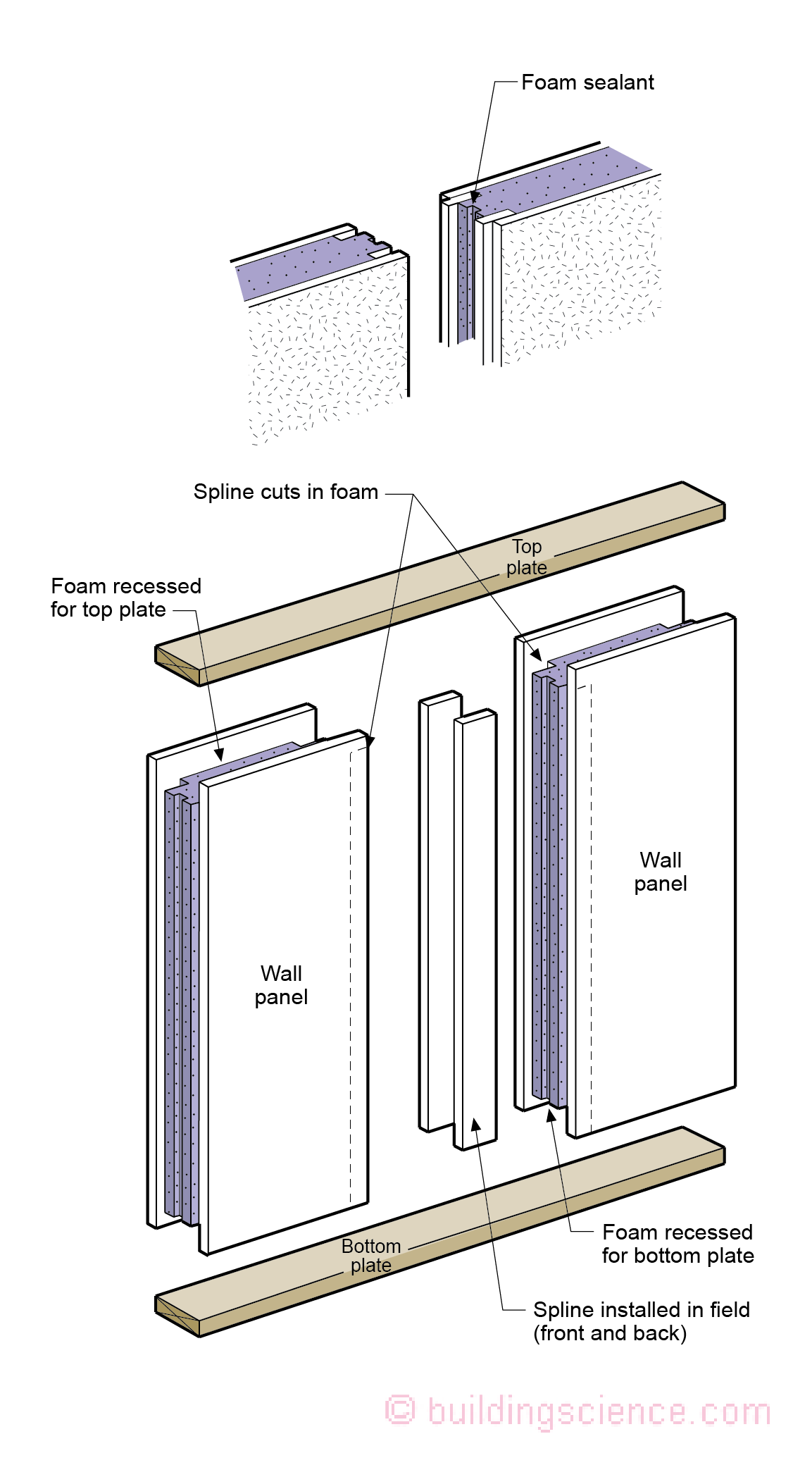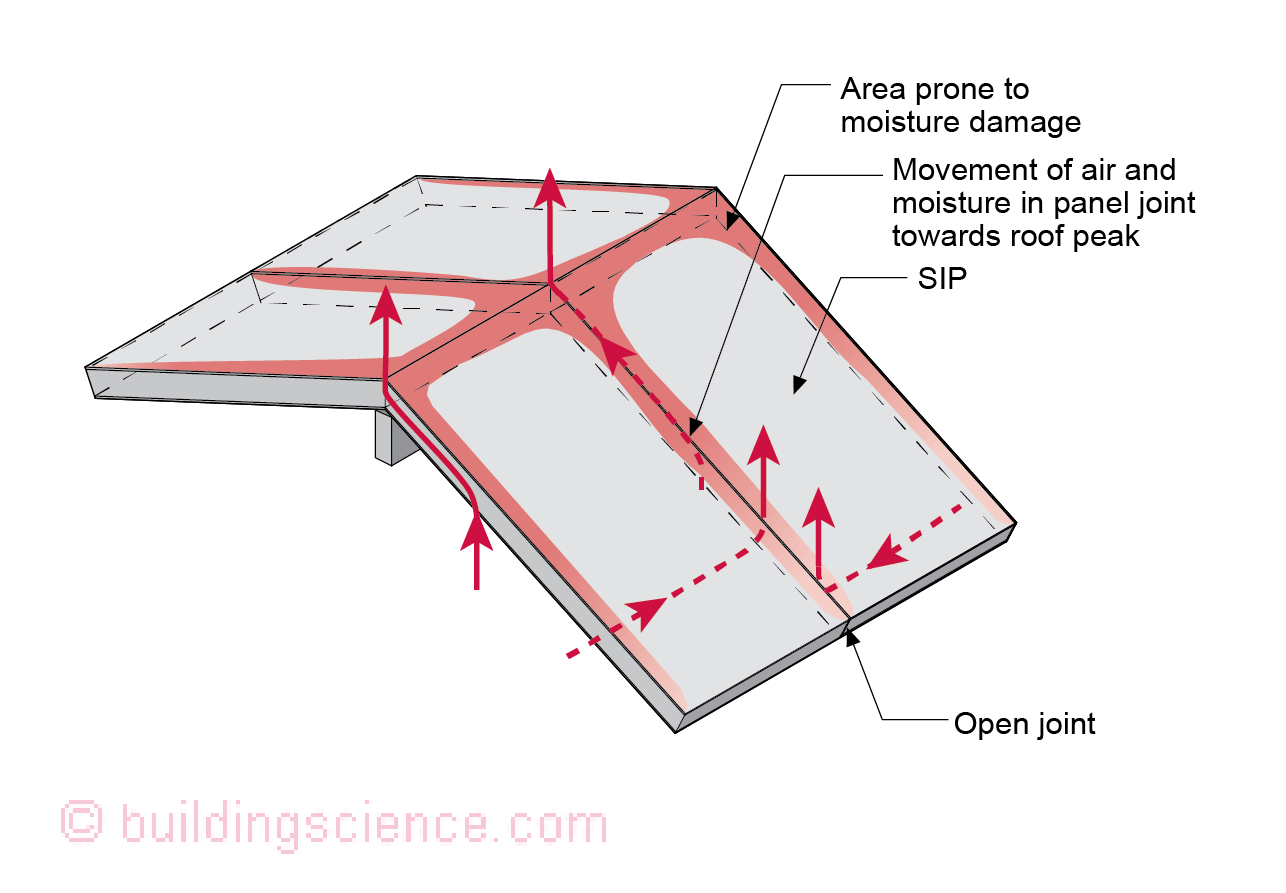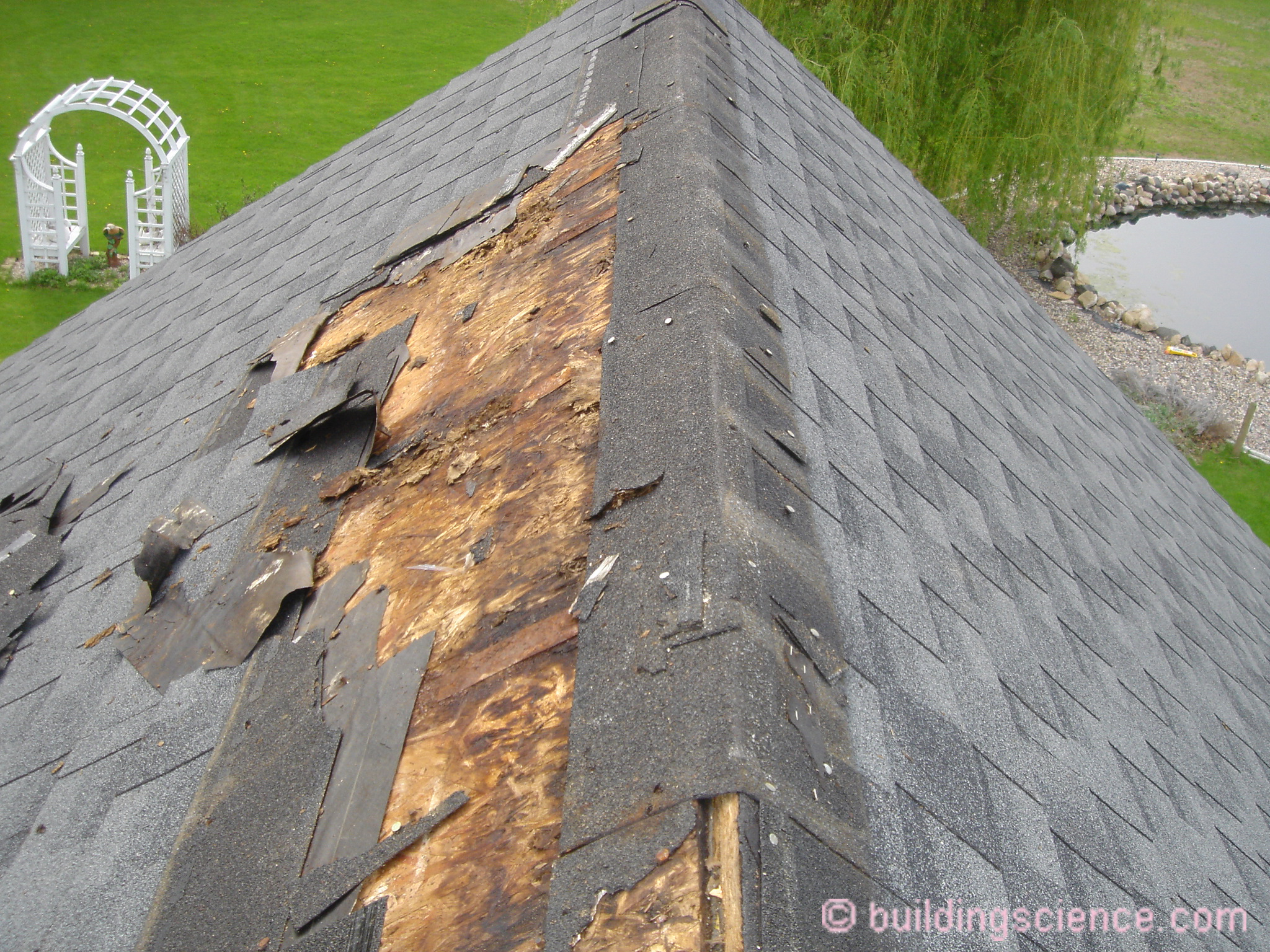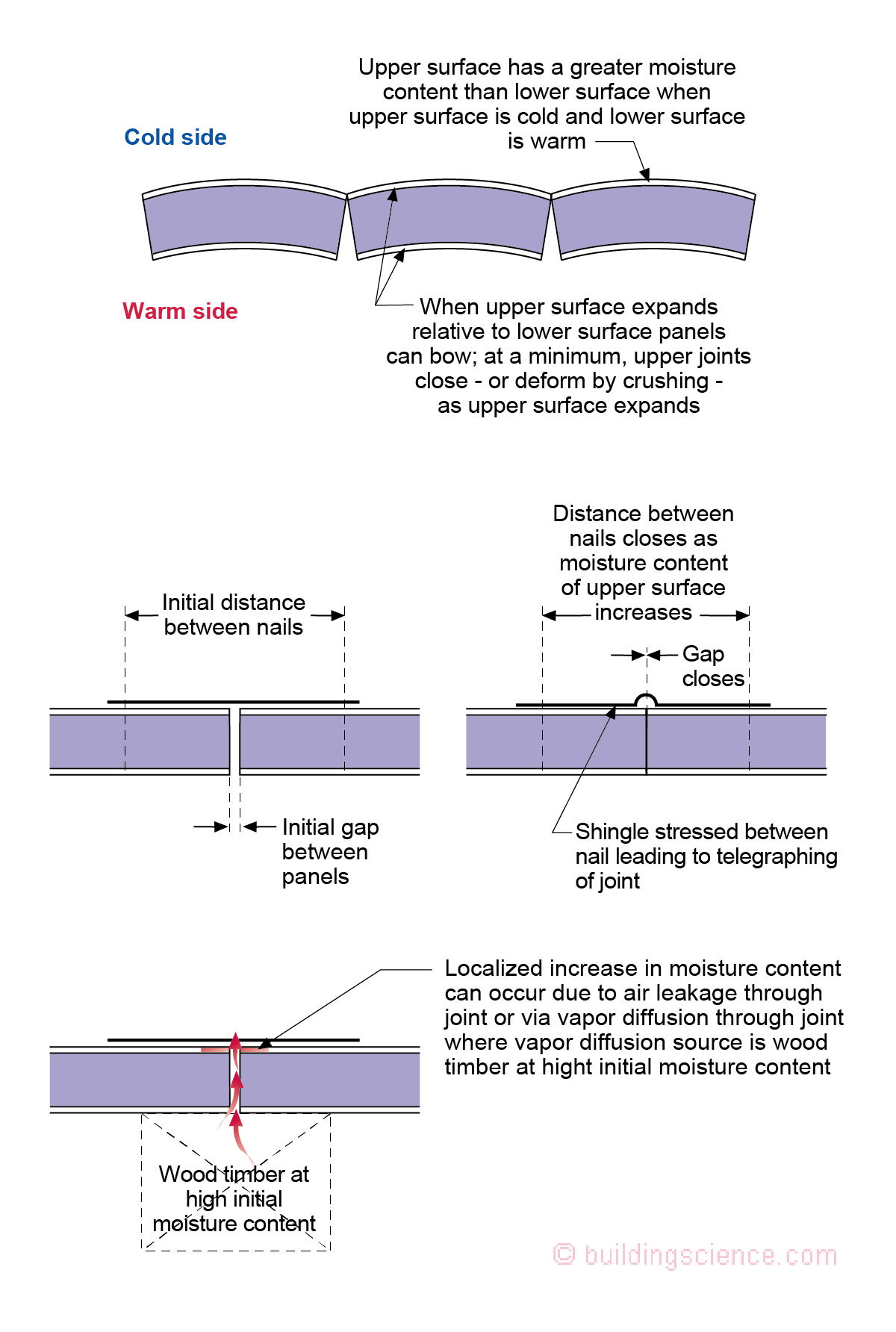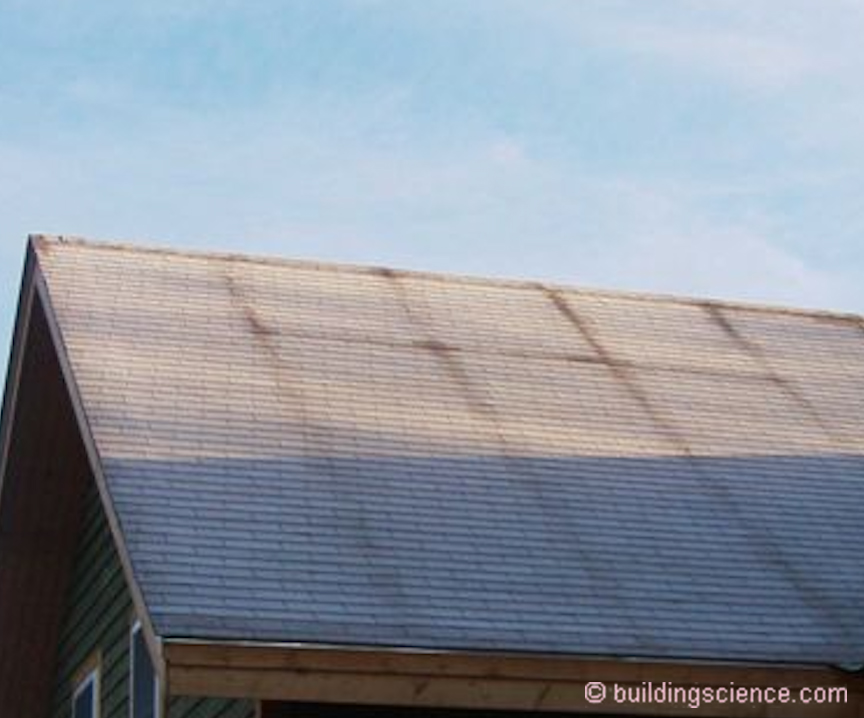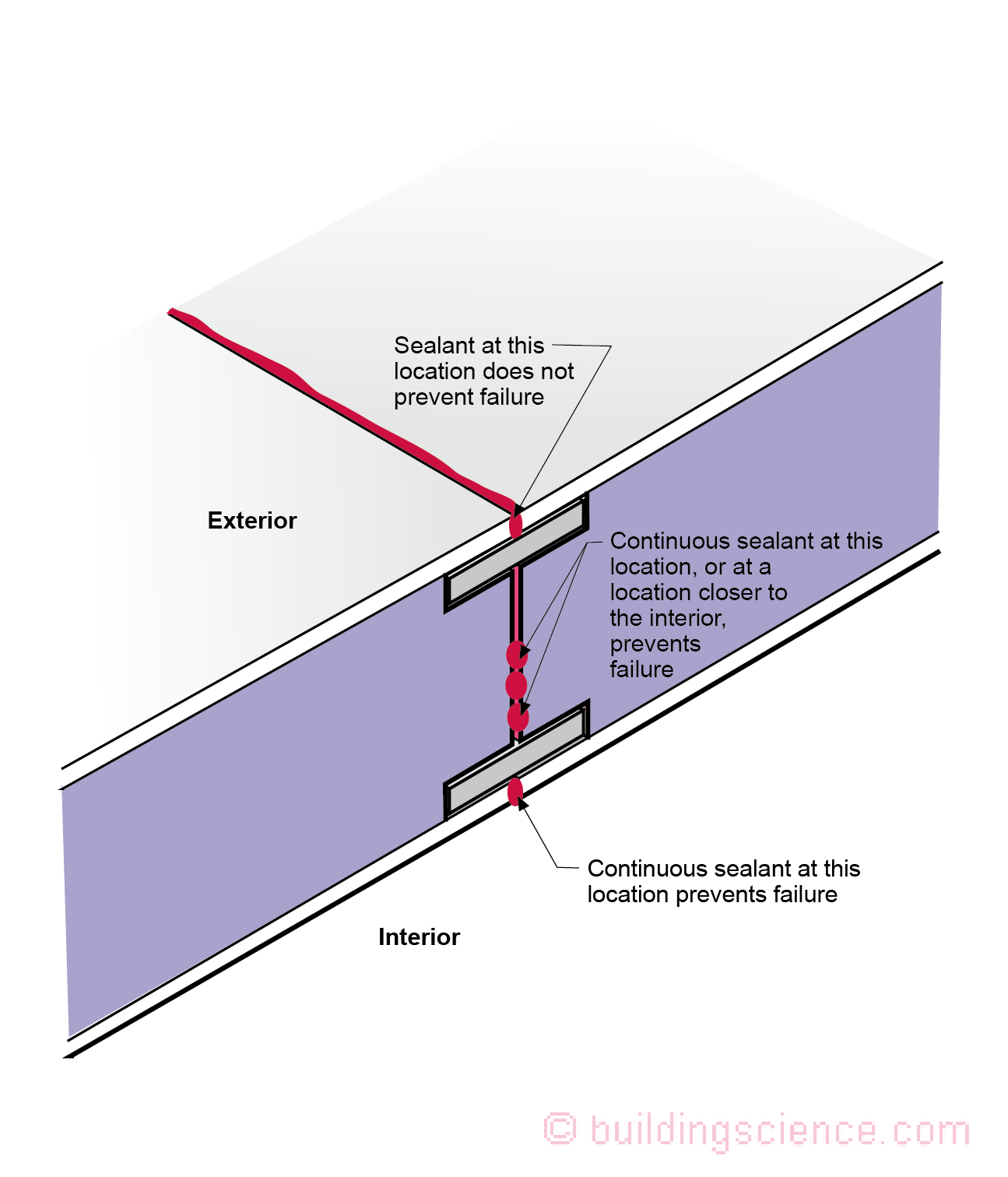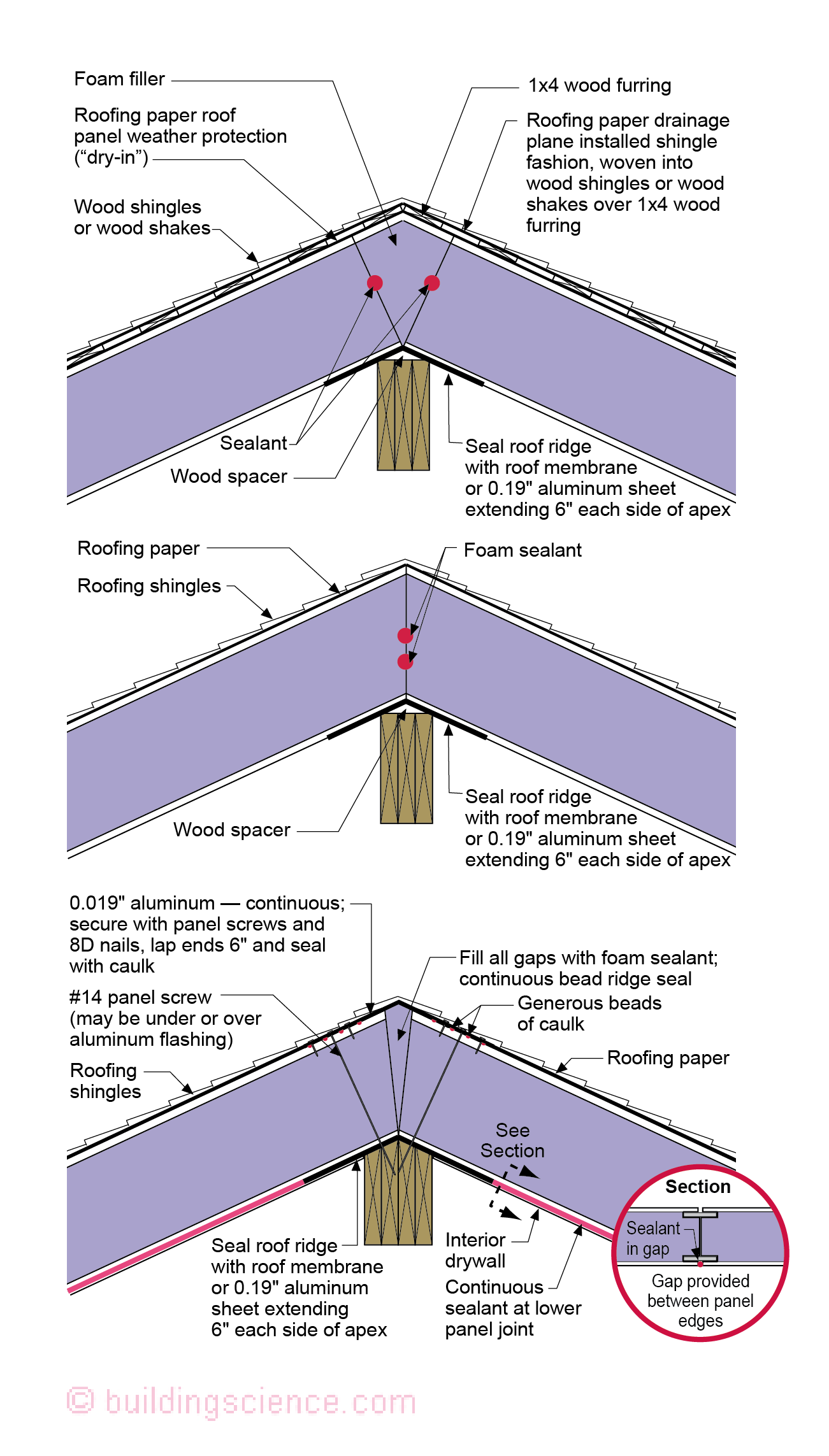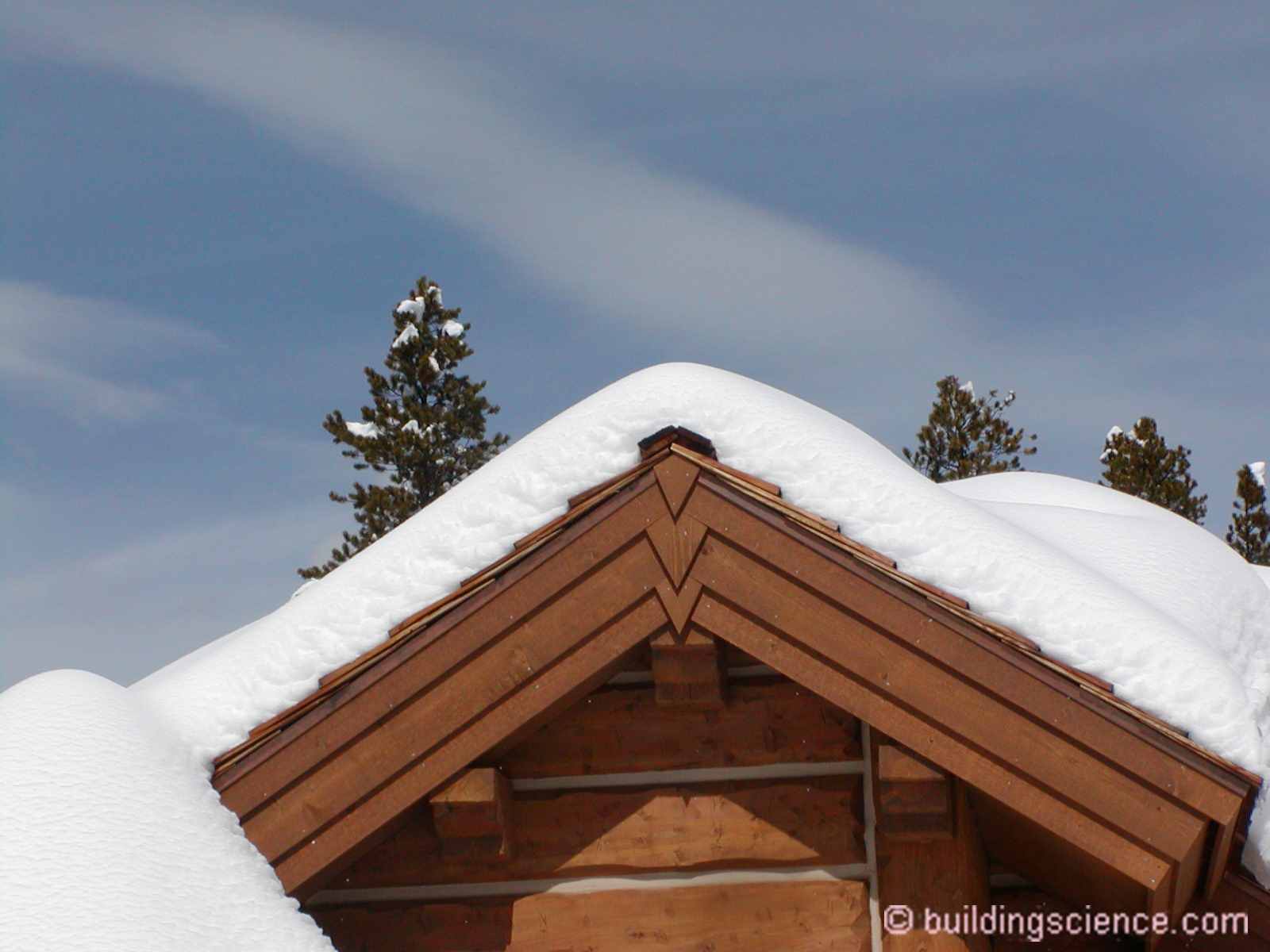Structural Insulated Panel Systems (SIPS) are prefabricated building panels consisting of plastic foam cores sandwiched between two skins, typically oriented strand board (OSB) or plywood (Figure 1). For the record, I like them. They are a good panel system. So, do not take the comments that are coming as Joe being negative Joe…. I just want folks to stay out of trouble.1 We have been here before (BSI-036: Complex Three Dimensional Airflow Networks, February 2010)…twice (BSI-088: Venting Vapor, July 2015). Apparently, folks have not been paying attention. Bad stuff keeps happening to good panels. Back then, 10 and 20 years ago, SIPS were not all that popular and so not a lot of problems because there were not a lot of assemblies. Guess what, SIPS are getting popular. That part I like. Unfortunately, folks are not paying enough attention to stay out of trouble. That part I don’t like.
Figure 1: SIPS Wall Assembly - Prefabricated building panels consisting of plastic foam cores sandwiched between two skins, typically oriented strand board (OSB) or plywood.
So, here goes again….the single greatest concern with SIPS is their ability to control rain water entry. In this regard, SIPS should be treated similarly to wood frame construction where OSB or plywood is used as an exterior sheathing. Accordingly, an exterior water control layer should be installed over the exterior face of the exterior SIPS sheathing and detailed at window openings in a similar manner to wood frame construction. Folks have figured this out. SIPS now rarely have issues with rain water entry. Yeah!
The next biggest concern with SIPS is their ability to control air flow from the interior to the exterior at panel joints. Unfortunately, folks have not figured this out. This is a big deal with roofs. Bad stuff happens at ridges….”ridge rot”. (Figure 2 and Photograph 1).
Figure 2: Roof Panel Airflow Problems – It is necessary to control air flow from the interior to the exterior at panel joints particularly at roof assemblies.
Photograph 1: Bad stuff happens at ridges….”ridge rot”.
There is more….since SIPS components are made from laminated or adhered elements they can be prone to dimensional stability problems due to thermal induced moisture differentials between their wood-based hygroscopic facings. They can bow and move differentially with the changing moisture contents of their exterior skins. This can result in the “telegraphing” of panel joints in roof assemblies under asphalt shingles. Again, unfortunately, folks have not figured this out (Figure 3 and Photograph 2).
Figure 3: Telegraphing of Panel Joints (telegraphing can occur due to panel movement, telegraphing can also occur due to localized increase in moisture content)
Photograph 2: “Telegraphing” of panel joints in roof assemblies under asphalt shingles.
So, what do folks need to do? Panel joints seal the heck out of them at the interior as well as close to the interior (Figure 4). Yup, two locations….belt and suspenders….systems redundancy…. This is a really, really big deal in roof assemblies.
Figure 4: Sealant at Panel Joints - At panel joints seal the heck out of them at the interior as well as close to the interior…two locations…
What else? The ridge…the ridge…did I mention the ridge? See Figure 5. Note that there are three options – pick one…
Figure 5: SIPS Roof Ridge – Three options shown, pick one.
OK, what else? Well, snow and ice-dams. There is only one way to deal with ice dams.2 Venting. Yes, we were here before (“BSI-046: Dam Ice Dam”, February 2011). A vented “over roof” needs to be installed over the SIPS in locations where the ground snow load is greater than 50 lb/ft2 (244 kg/m2). See Photograph 3.
Photograph 3: Note the air inlet at the facia. Yes, the ridge vent is covered with snow, but snow is not an air barrier. Having said that…add a “cupola” or two along the ridge to connect the “vented over roof” through the snow layer to the outside air.
Now comes the conservative Joe…I like to install a “vented over roof” over all SIPS…everywhere. I install a vapor open roof underlayment directly on the top of the SIPS then install 2x4 furring running vertically on 24 inch (60 cm) centers with horizontal 1x4’s over the top. Then plywood or OSB sheathing. Guess what? No telegraphing of panel joints. No ridge rot even if my air sealing is not “perfect”. And no ice dams where it snows.
Guess what? Lots and lots of ski resort “chalets” and “lodges” are getting built with SIPS. Yup, I get lots of calls. Guess how I repair them? I install a “vented over roof”. The problems go away. So now I recommend the approach for all SIPS roofs. Everywhere. Even where it does not snow. No “telegraphing”, no ridge rot, no ice dams, no complaints. No problems.
Footnotes
1 I remind folks that I rarely get a call saying “Joe, things are great, let’s have a beer…” The call I get is “The vampires are here, it is the end of the world, only the fire folks are happy because the building is too wet to burn..”
2 In my opinion…note the “in my opinion” thing.

